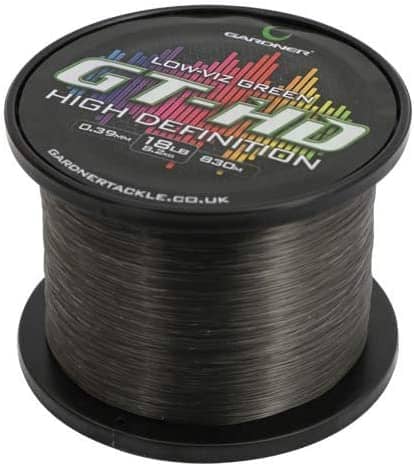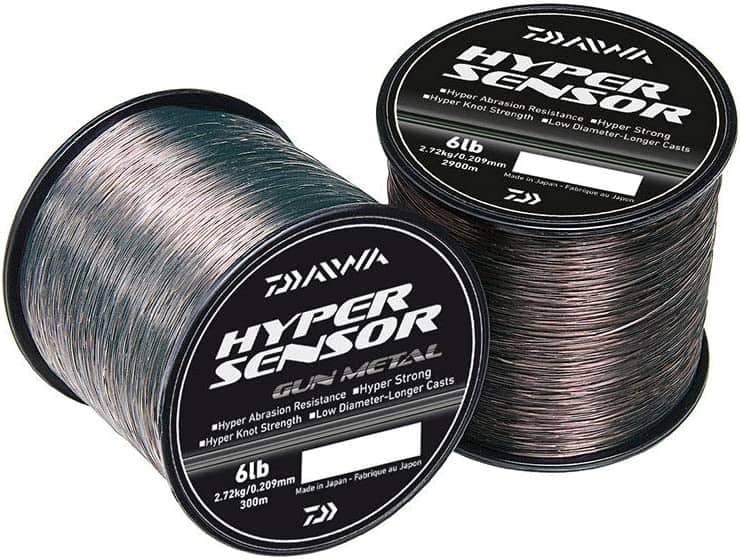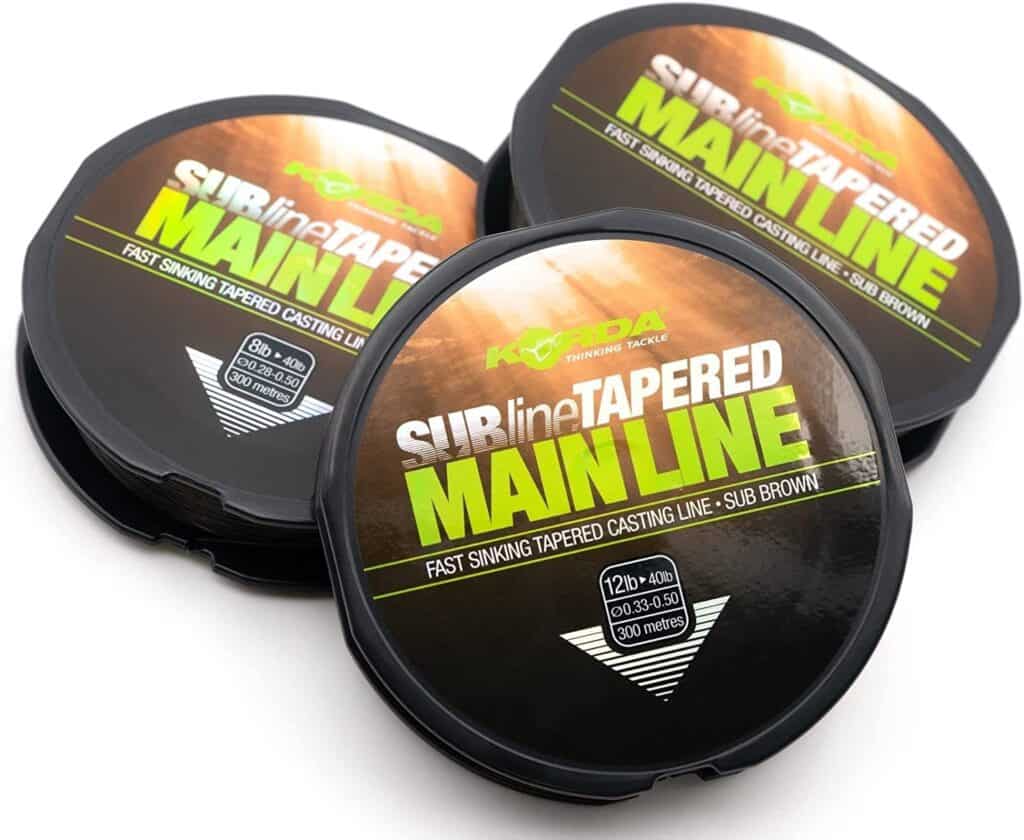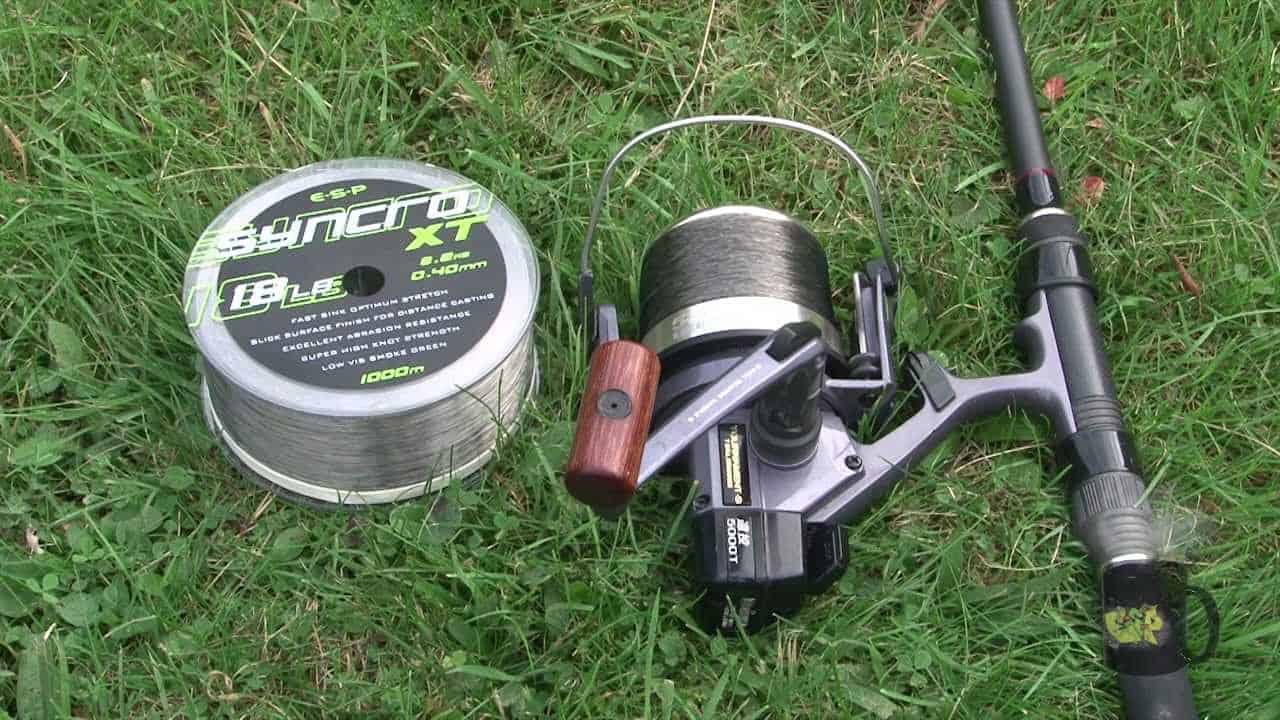What is the best carp fishing line?
Choosing the best carp fishing line is the most important factor that you can consider when it comes to improving your success rate and landing that elusive catch.
It’s important that the fishing line for carp is made from high-quality materials that are abrasion-resistant and can handle sharp objects underwater. Having a good knot strength will also help you feel more confident when tying it.
Choosing the best fishing line can be very important when it comes to catching a good fish. In this article, I will talk about the best fishing line from some of the leading brands such as Daiwa, Berkley, Nash, and Fox.
The right fishing line is very important when it comes to setting up a successful fishing setup. A good line should be able to hold up well when you’re reeling in large fish, and it should also be good when you’re spooling up your reels.
I’ll talk about some of the steps that will help you set up a successful fishing setup and choose the best fishing line. After testing a few lines, you’ll be able to find one that’s reliable both in terms of performance and longevity.
The strength of the line that’s used in carp fishing is usually 15lb. In clear lakes, you can easily use a 12lb breaking strain. On the other hand, in weedy areas, you can use a higher weight line of up to 18lb.
If you’re planning on using a spod rod setup, I highly recommend using a braid. This type of line will help minimize the snap-offs that can occur when using a shock leader. A 30lb braid is ideal for covering most spodding situations.
A clear mono is commonly used in the fishing of carp. There are also various types of lines that are designed for different types of lakes, such as brown or green.
Getting the right fishing line is very important in order to maximize your chances of landing a big fish. It can be hard to keep a big fish from getting taken away from you after accidentally hitting a break in the line.
By choosing the right line, you can minimize the chances of getting caught in a bind and improve your chances of success.
We have listed down several types of fishing lines that will work well for different types of fishing situations.
The Best Carp Fishing Line – Our Recommendations
1. Gardner GT HD Low Vis Line

I know a lot of people who use the Gardner HD Line. I have never heard a negative word about it. It is a great opener to any list of the best fishing lines.
The development of the GT-HD main line has created a new benchmark for performance in low-stretch copolymers. Through a combination of these features, we’ve been able to create a line that’s not only superior in every way but also outperforms other low-stretch lines. One of the most important factors that the GT-HD line provides is the feedback to the rod tip when it feels the lead down.
Gardner’s GT-HD is a high-grade copolymer line that is designed to give you a crisp feel and reduced stretch without compromising the other important characteristics. This line was developed using a cutting-edge manufacturing process that allows it to retain its high knot strength and abrasion resistance without compromising its other desirable qualities.
2. Daiwa Hyper Sensor

The line is very soft and sensitive, and it has a high resistance to abrasion. It also has a good abrasion-breaking strain of 5.44 kg.
One of our favorite fishing lines is the Daiwa Hyper Sensor. It’s a strong and versatile line that can be used for both freshwater and saltwater fishing. Its small diameter allows it to be used for longer casting.
This line is made from durable materials, which makes it ideal for both surface and deep fishing. Its abrasion resistance and hyper-knot strength make it an ideal choice for both freshwater and saltwater fishing.
The durable and strong Daiwa Hyper Sensor line is ideal for fishing in harsh conditions. It can also be used for long casting due to its small size.
The Daiwa Hyper Sensor line is also made from a reduced diameter and has higher abrasion resistance. This makes it an ideal choice for regular rough fishing.
The Daiwa Sensor line has been around for a long time and is one of the most popular lines for fishing with the fish. It’s a relatively low-cost alternative to other lines. Many people claim that this line outperforms other brands in terms of performance. I’ve used this line for around 15 years and am in a good position to review it.
3. Korda SUBline

Korda’s SUBline is a high-performance fishing line that has been designed to handle the toughest conditions. Over the years, we have tested various lines and found that it has the strongest knot strength and toughness. It is the only choice when faced with difficult fishing situations such as heavy weeds and gravel.
Unlike other lines, SUBline doesn’t have the stiff, wiry feel that is typically found on tough reels. It’s made using the latest line-extruding technology.
In addition to the materials used, SUBline also features a very dense material that ensures that it will sink well. This makes it ideal for dealing with heavy carping and European work.
Korda Subline is a great alternative to standard fluorocarbon lines for those who are looking for a replacement for their damaged line.
This is a fast-sinking line that is ideal for slack-line fishing. It features durable and flexible construction that makes it an ideal choice for various applications.
Despite its initial feel, the Korda Subline is incredibly supple. Many of the fishermen who tested it said that they were surprised by how soft it felt to the touch.
Korda Subline is available in various breaking strains, such as the 10lb, 12lb, and 15lb. For those who are looking for a lighter line, Korda has also created a 20lb version that is ideal for those who are dealing with weeded water. This line will not break even when you’re pulling in strong and kiting carp.
The Korda Subline is also ideal for the experienced fisherman who enjoys the best of European monster carp fishing. It features four different strains of line, and these are all available in green and brown. This ensures that you can use it in various water conditions, such as areas that are heavily weeded or water that is clouded with other vegetation. Having this line will allow you to keep your line invisible to the fish you’re targeting.
Types of Carp Fishing Lines
Before you start thinking about the best line for your fishing needs, it’s important that you first assess the various types of lines that are made for the sport of carp fishing. There are three main types of lines that are commonly used by anglers.
Fluorocarbon
Unlike other types of lines, fluoro is also very dense, which allows it to bend light like a liquid. This material is ideal for those who are looking for a line that can be easily undetectable in the water. It also sinks quickly, which makes it an ideal choice for those who are trying to target fish that get spooked. Fluorocarbon is also very sensitive, which makes it an ideal choice for those who are using bottom-baiting techniques.
Unlike other types of lines, fluoro doesn’t become visible in the water as it increases its breaking strain, which makes it an ideal choice for those who are trying to target bigger fish. This type of line also allows users to increase their breaking strain without worrying about detection.
Monofilament
One of the most common types of lines that are used for the sport of fishing is the monofilament, which is a highly abrasion-resistant material. This line is very low-cost and can be made easily by simply using a single strand of nylon. Its natural color can be easily dyed, making it an ideal choice for novice or junior fishermen.
This material has a high memory, which allows it to absorb the shocks that come from aggressive actions. Monofilament lines are also very forgiving, allowing them to hold their shape even after they have been removed from the reel.
A large diameter-to-strength ratio is not ideal for most people when it comes to choosing a strong and durable line for fighting large fish. However, if you have several spools and a tight budget, then a monofilament line is a great choice. This type of line is very buoyant and doesn’t sink quickly, making it an ideal choice for surface fishing. However, it might not be a good choice for slackline fishing due to how it doesn’t have a quick sinking rate.
Braid
A braided line is made up of multiple fibres that have been molded and welded together, and it provides incredible strength when it comes to fighting hard-fighting fish. This type of line is also very dense, which makes it an ideal choice for those who are using bottom-baiting techniques. Although it has a small diameter, the color options for this line are limited due to its appearance.
Due to the cost of the line, a braided line is often paired with Fluorocarbon leaders. These two materials provide users with a high break strain and a sinking density.
Can You Fish For Carp With Braided Line?
For those who are looking for a line that can be easily cast long distances, make note that most fisheries do not allow braid to be fished as the main line.
It is often used for marker floats, finding features, spombing or sodding, and hook links,
Why Do Some Lakes Ban Braid?
Due to concerns that fish may be killed or damaged by the use of braided lines, some fisheries have banned it. There is little evidence supporting the claim that this type of line causes this issue. However, more and more clubs and organizations are banning this type of line.
There are some false and misleading statements being made about the damage caused by the use of braided lines. Due to this, many fisheries have changed their rules and are now banning the use of Braid as a hook length and as a mainline.
The damage caused by the use of braided lines can be severe, and it can lead to the death of the fish. Some of the damage that can occur include the body of the fish gill area and the scales.
There are two types of claims being made about the damage caused by the use of braided lines. One of these claims states that the short hook lengths can tear into the fish while they are fighting or hooked.
Another type of damage that can occur is the use of a mainline that wraps around the fish while the fisherman is fighting it.
Another type of damage that can occur is the use of a line that wraps around the fish while it is being played landed. This type of damage is very severe.
How Strong Should My Fishing Line Be?
The strength of a fishing line is measured in pounds per square inch, and it can be referred to as the breaking strain. This is the strength that you need depending on the type of fishing that you’re doing.
For instance, if you are planning on fishing for large fish, such as a large amount of fish that weighs around 20 pounds, you should use a line that is 12 to 15 pounds. However, if the lake is weedy or the venue has a lot of fish, you might want to increase the breaking strain to 15 pounds. This advice can be useful in adapting to the fishing situation.
The breaking strain of a line lets you know how much force it can exert before it breaks, which helps determine the size of the fish that you’re trying to target. You can pair different types of leaders with the appropriate break strain to increase the strength of your line, but without the proper one, you will end up with a lot of lost fish.
There are a few things that you should look out for when it comes to choosing the right line for your fishing needs. One of the most important factors that you should consider is the strength of the line. Most lines come in varying sizes and breaking strengths.
Does The Color Of Fishing Line Make A Difference?
There is a lot of confusion surrounding the various types of lines that can be used for fishing. While it is not always certain which line will work best in each situation, there are some key truths that can be learned about which line is ideal. For instance, Fluorocarbon is the most common type of line that is invisible underwater, while braided lines are the strongest.
Although they can be easily seen in the water, red and yellow stripes are often seen underwater by wary fish. These colors help us detect bites, but they are also likely to attract other creatures.
One of the biggest advantages of using a monofilament line is that it can be dyed very easily. This allows users to create a wide variety of colors to complement their venue. Also, it can be dyed vibrant and fluorescent, which is ideal for those who are looking for a style that requires a lot of patience and careful observation. Most of the lines are either dark green or clear brown to camouflage into the bankside.
If you’re a fish, then yes, you can see the colors on a fishing line. This is because, if this were not true, you would only have one choice of colors for your rod. However, it’s important to note that fish have different vision systems and can’t see colors unless they’re very close to the line.
Although fishing lines don’t scare fish, they can make them less likely to bite. Some factors that can make a fishing line more visible to fish include using brightly colored lines, as well as having abrasion resistance, and blending in with the surroundings.
When Should You Replace Your Fishing Line?
It’s important to replace your line every year to ensure that it’s still working well. This is because it can get tired after multiple seasons, especially if it has stretch and memory. You can also recycle old lines.
The frequency of use of the fishing line will affect its structure, which will make it more prone to tangles and weaker. Also, being stored in direct sunlight will affect the line’s UV protection.
You should change your fishing line at least once a year. Changing the frequency of your line will affect its lifespan. There are other factors that can affect its longevity.
Regardless of which type of fishing line you’re using, the quality of it will have an effect on how it performs over time and how it degrades.
Today, there are various materials that are used in the production of fishing lines. It’s important to consider the quality of these products when it comes to choosing the best equipment for your fishing. Without the proper fishing line, you’re going to have issues with breakages, tangles, and weak knots.
Lighter lines are more prone to wear, as they have a weaker structure. This means that they’re more prone to degradation over time, especially with regular use.
When it comes to keeping the fishing line, storing it wet will lead to faster degradation. On the other hand, saltwater will degrade the line faster than freshwater.
Although it’s recommended to replace your fishing line every couple of years, it’s also possible to use it for a long time.
Most people, especially those who are mainly fishing on small waters, probably don’t use more than about 50 meters of line per fishing session. Since the line is sold in varying lengths, you can cut off around 50 meters after a year, and continue using it for another 12 months. However, be aware that there may be instances of lost line due to tangles and breaks.
I have made a lot of mistakes during my fishing sessions and don’t want you to make the same mistakes. I’ve learned the hard way over 20 years of fishing most weekends, testing, tweaking, and testing again and now want to help you excel with your carp fishing.
If you need any help, you can reach me at Fishing Again’s Facebook page











